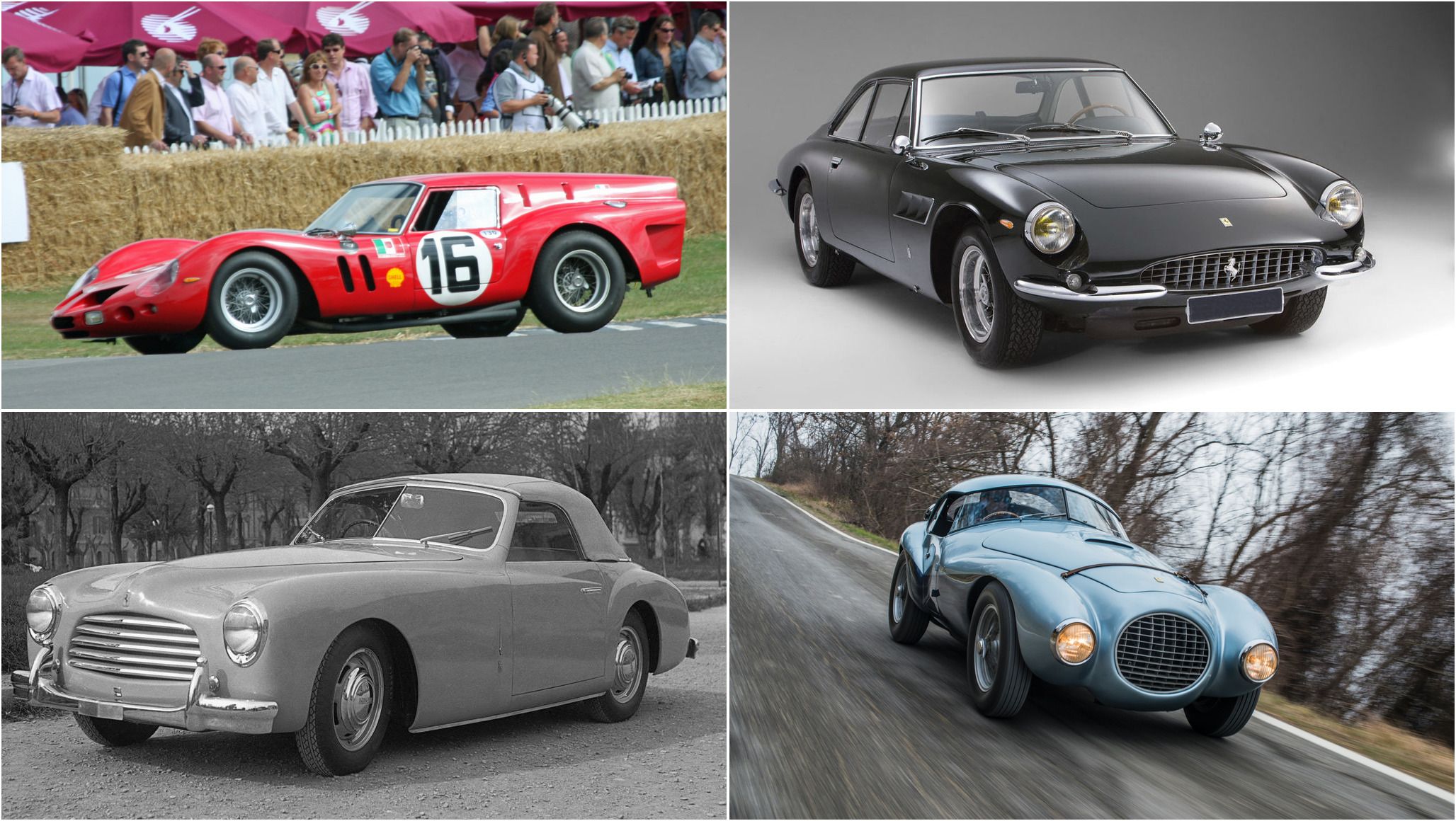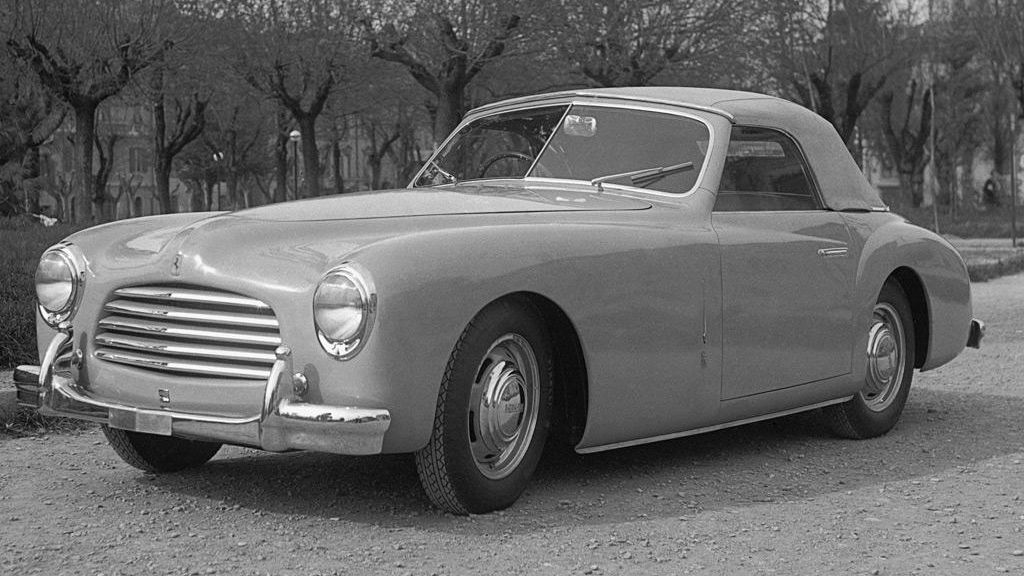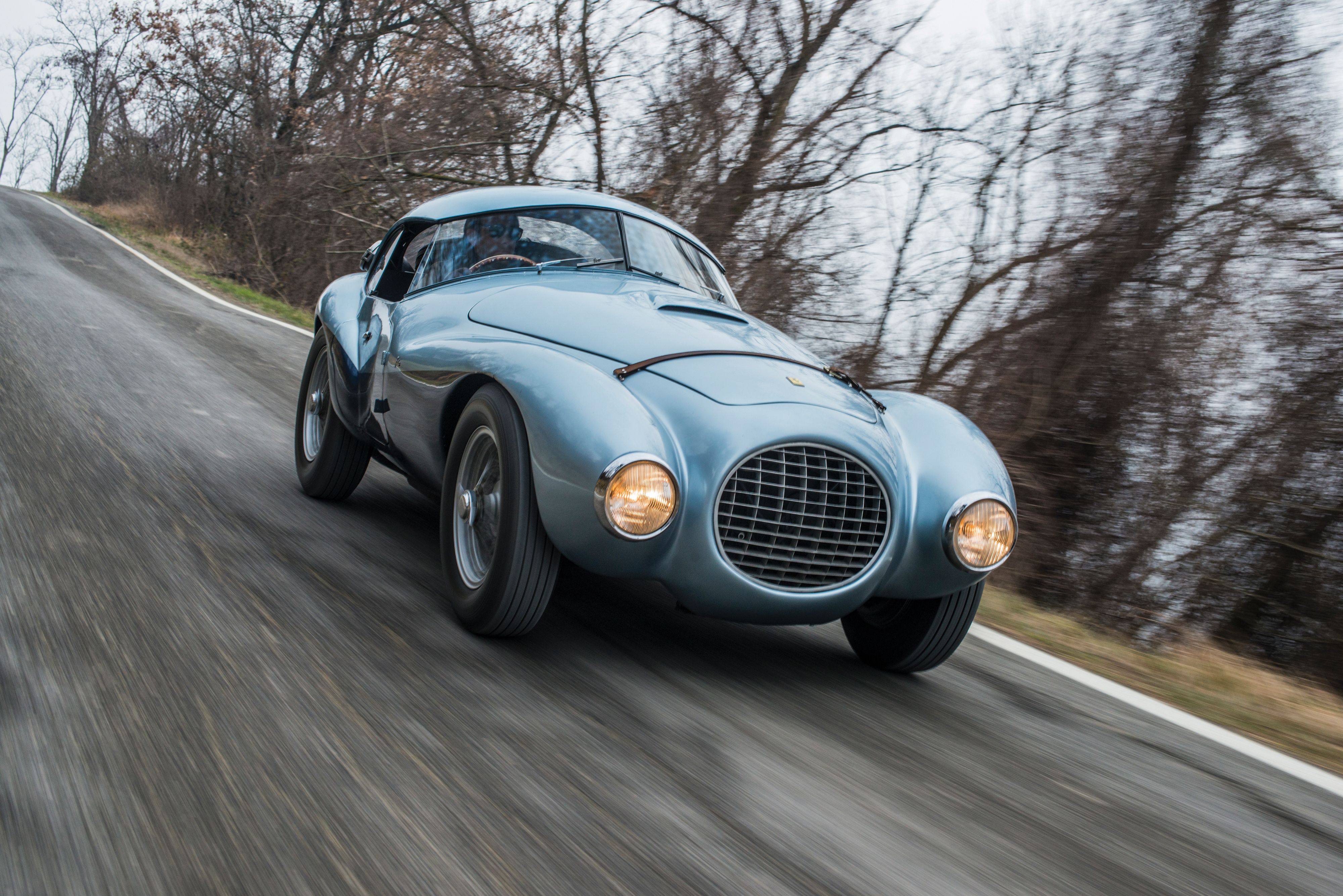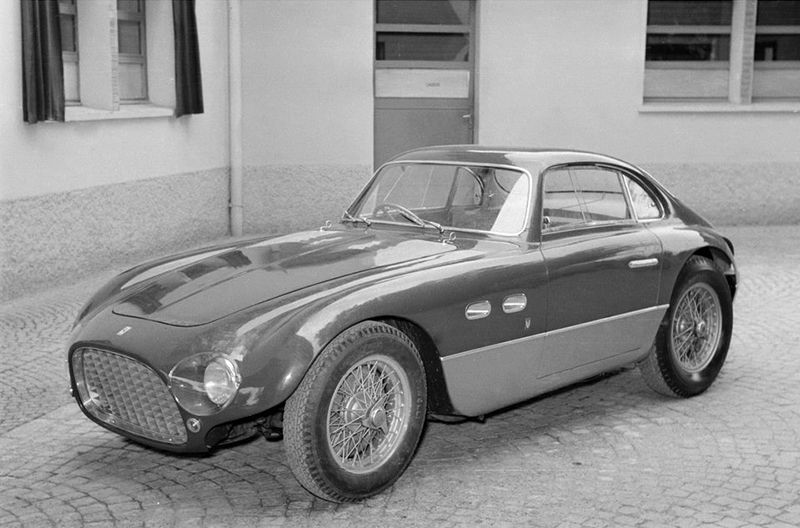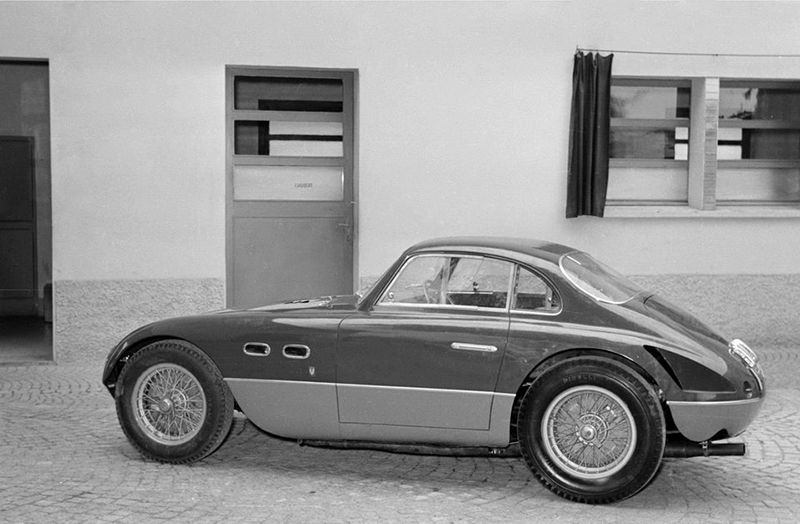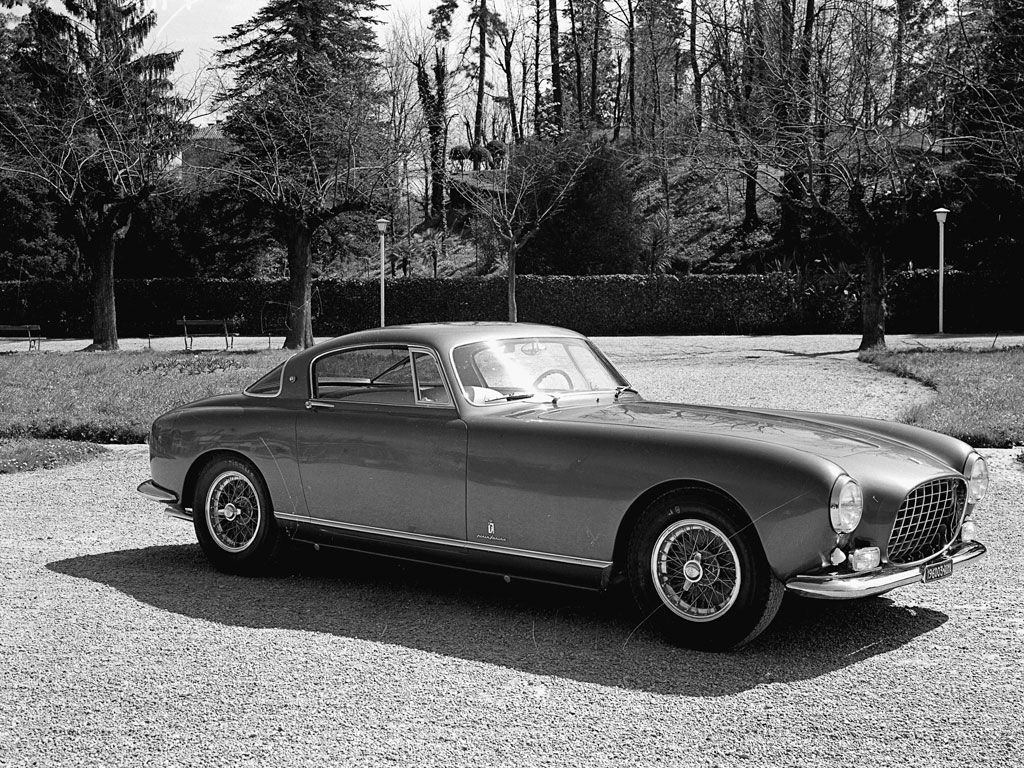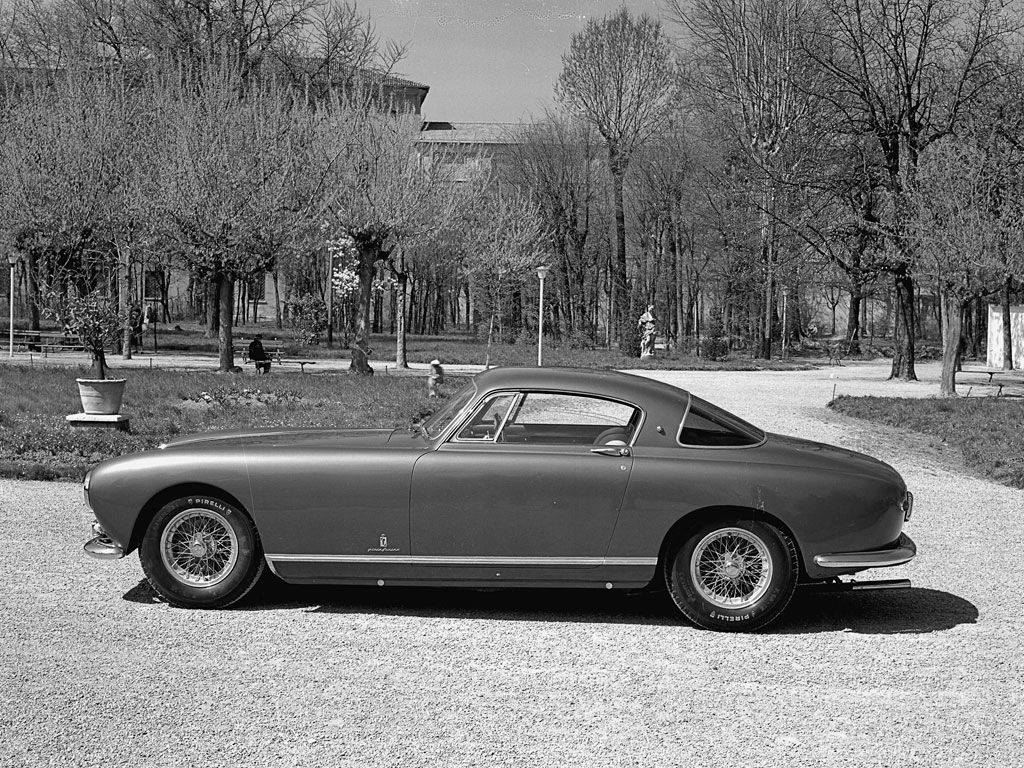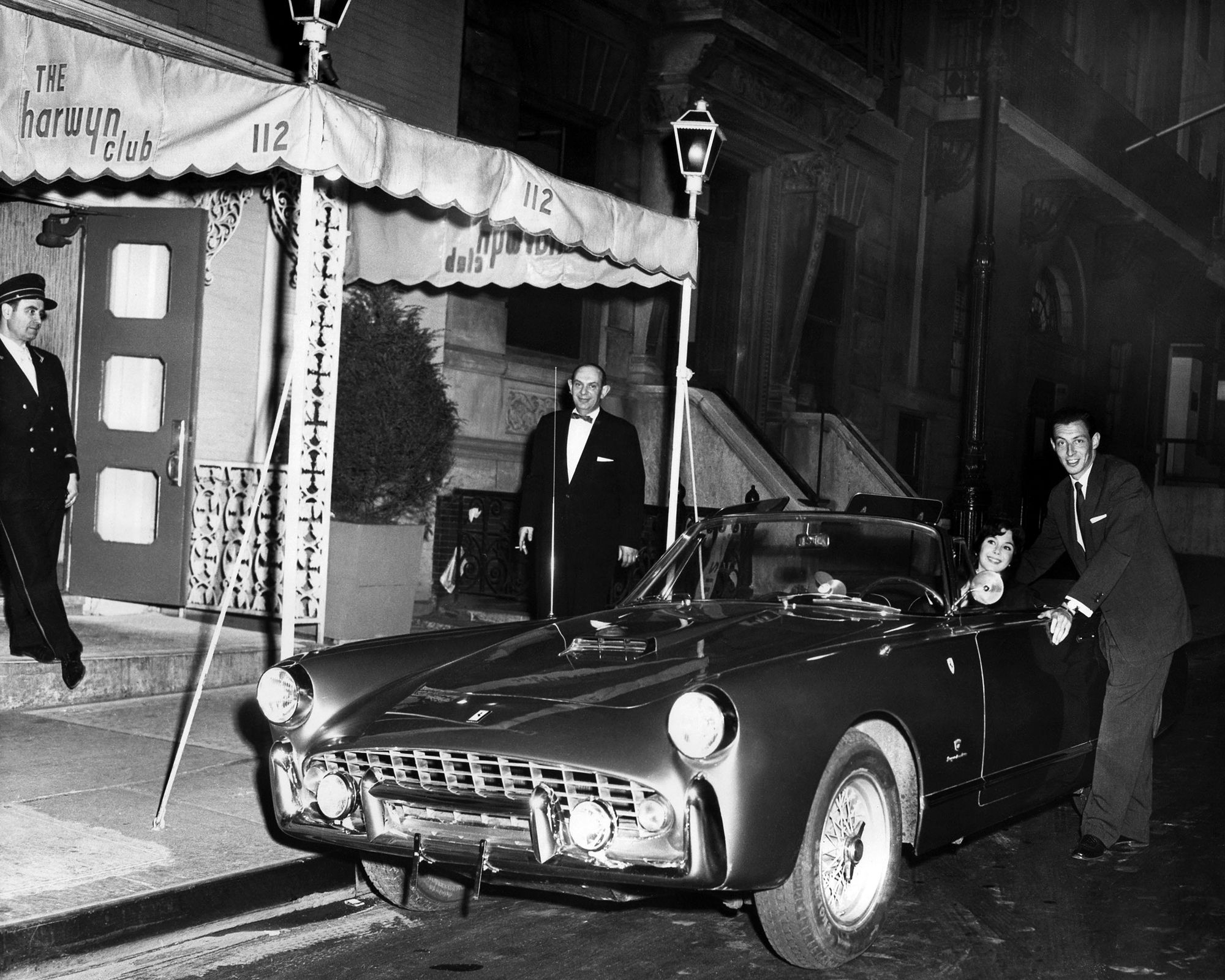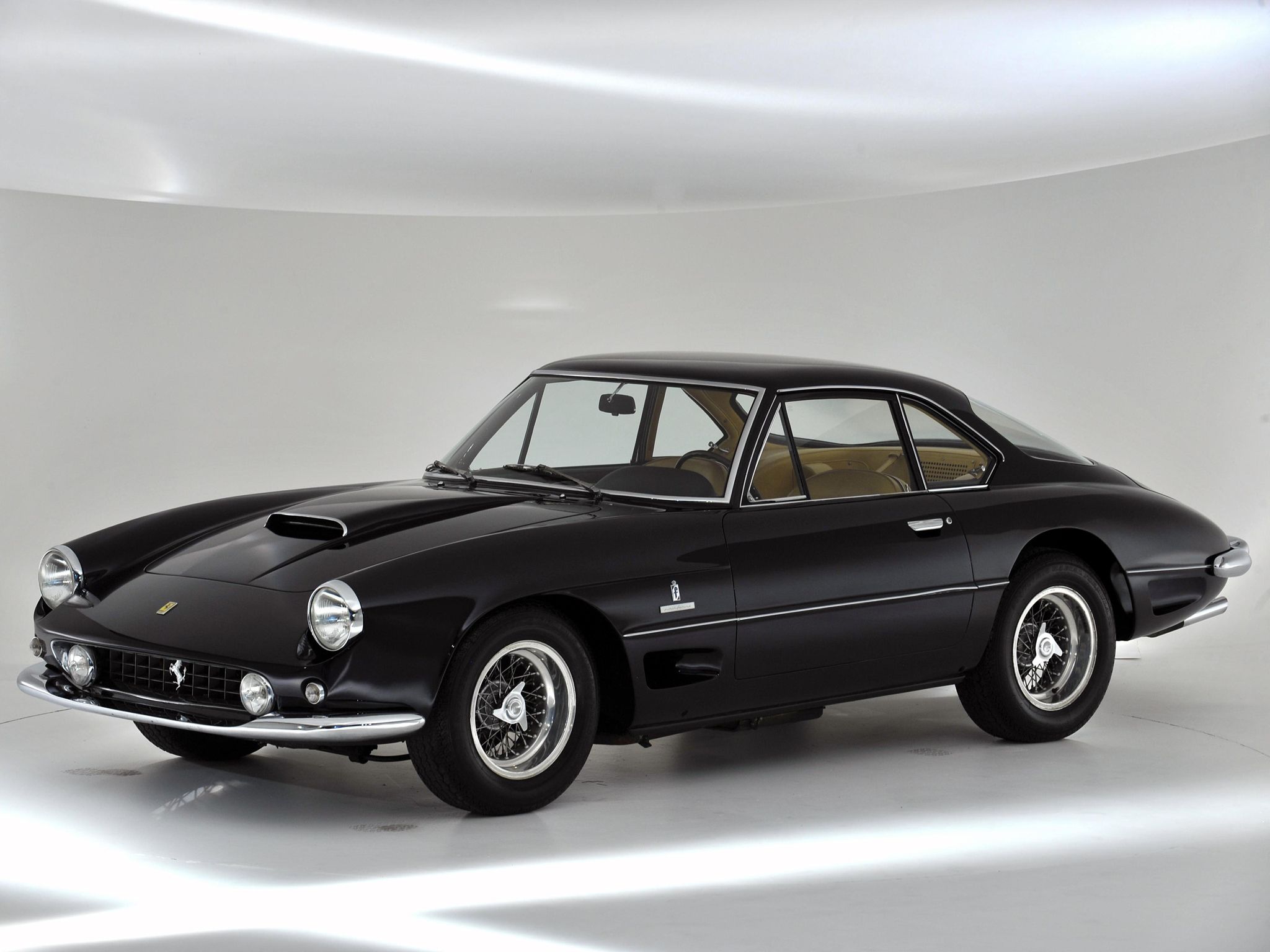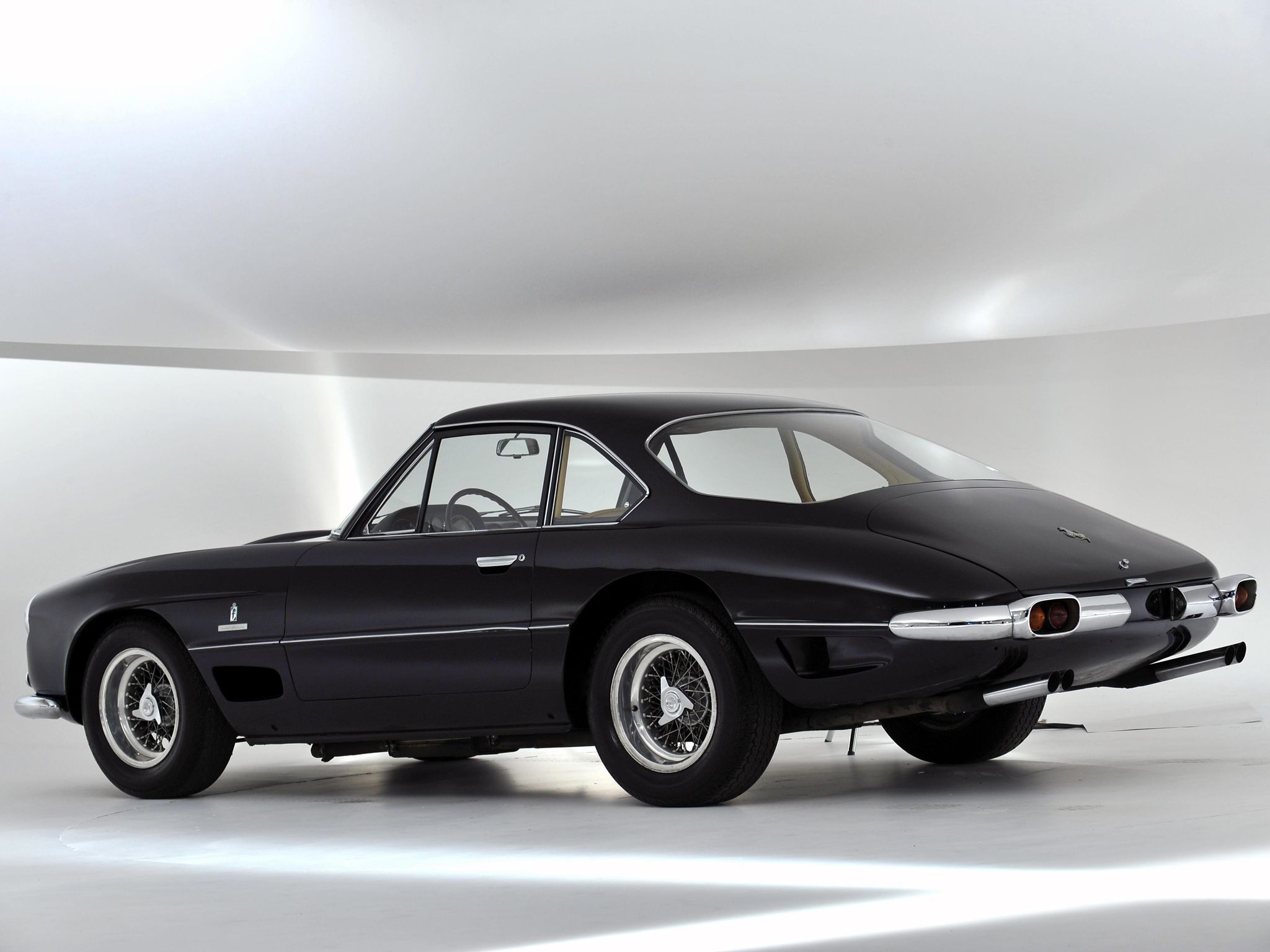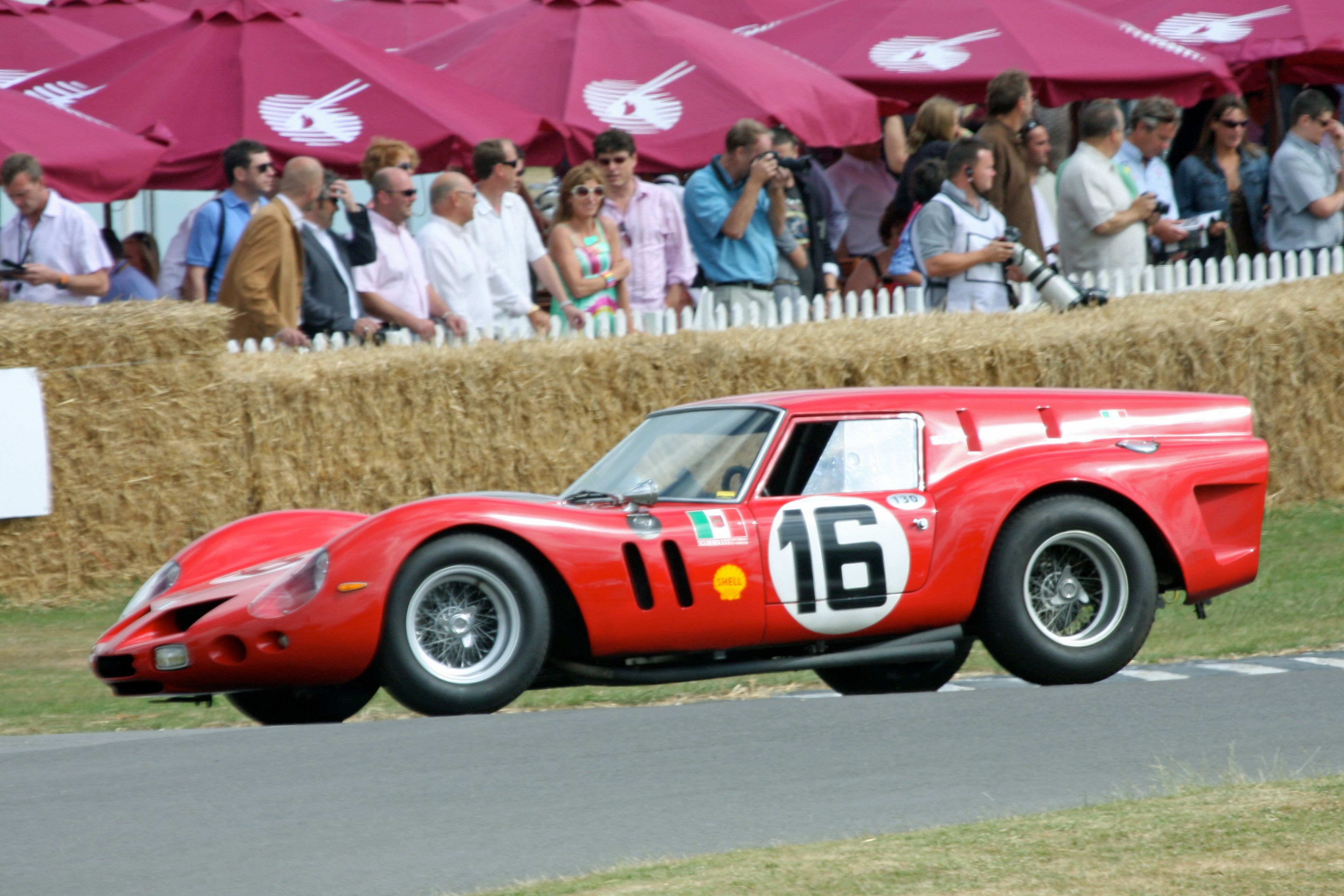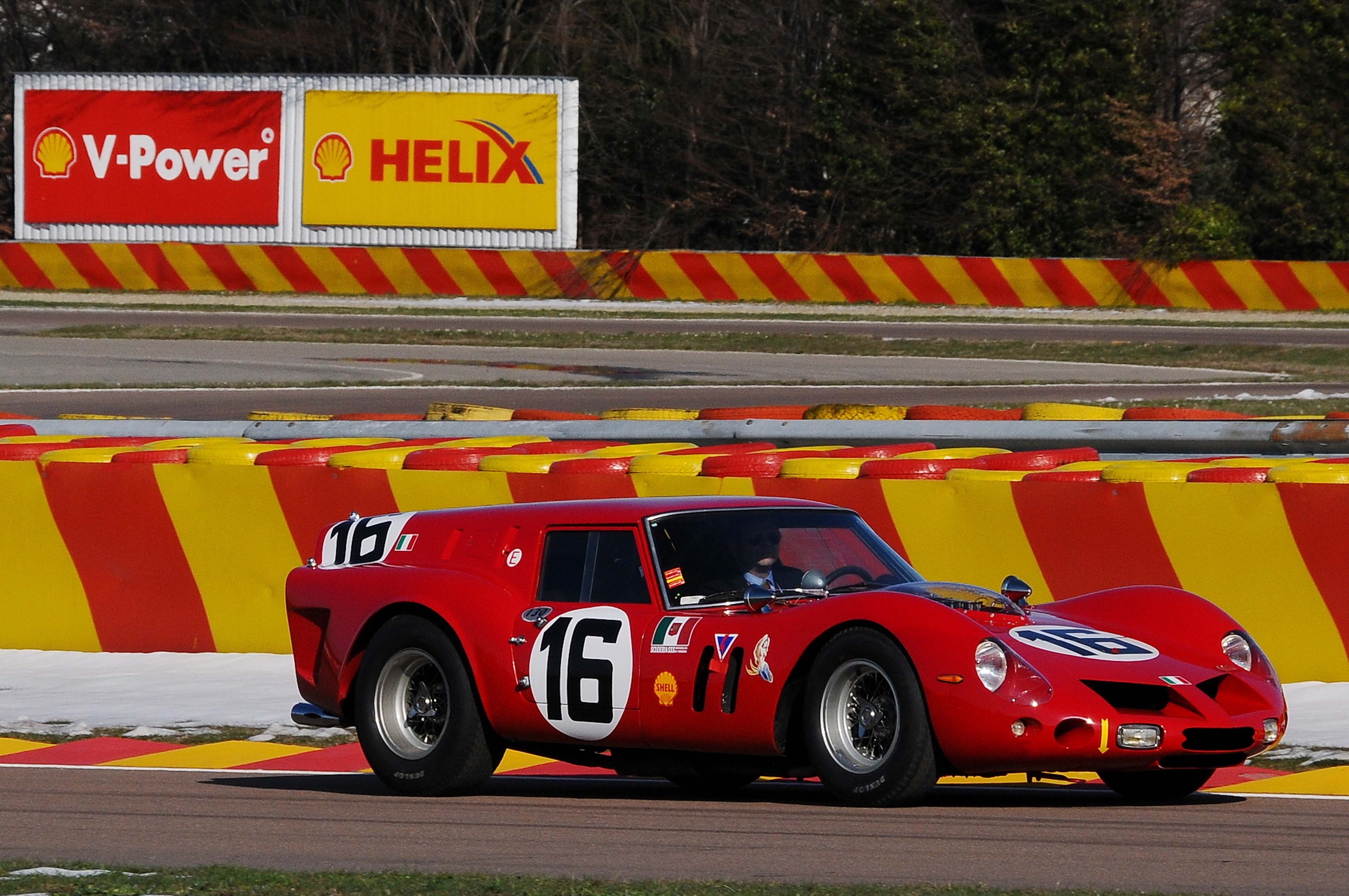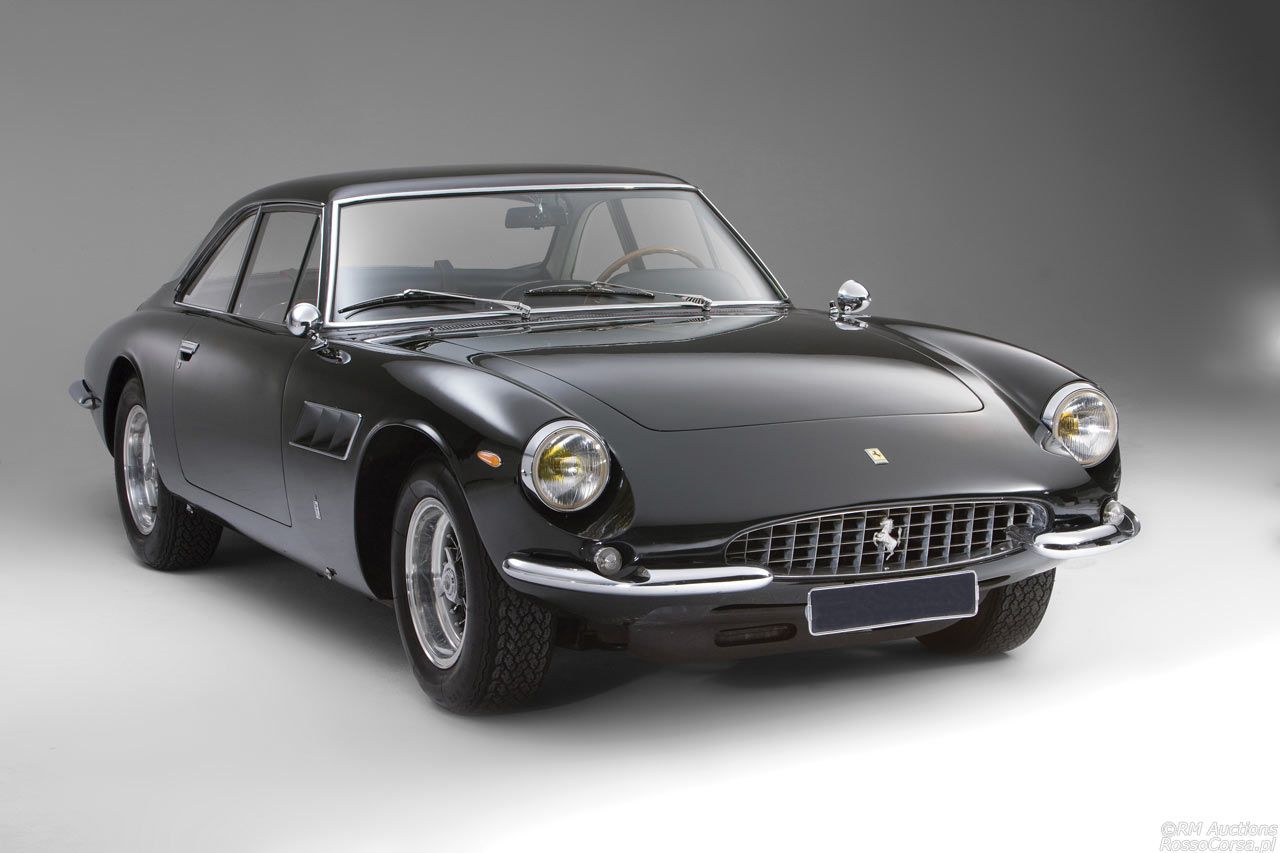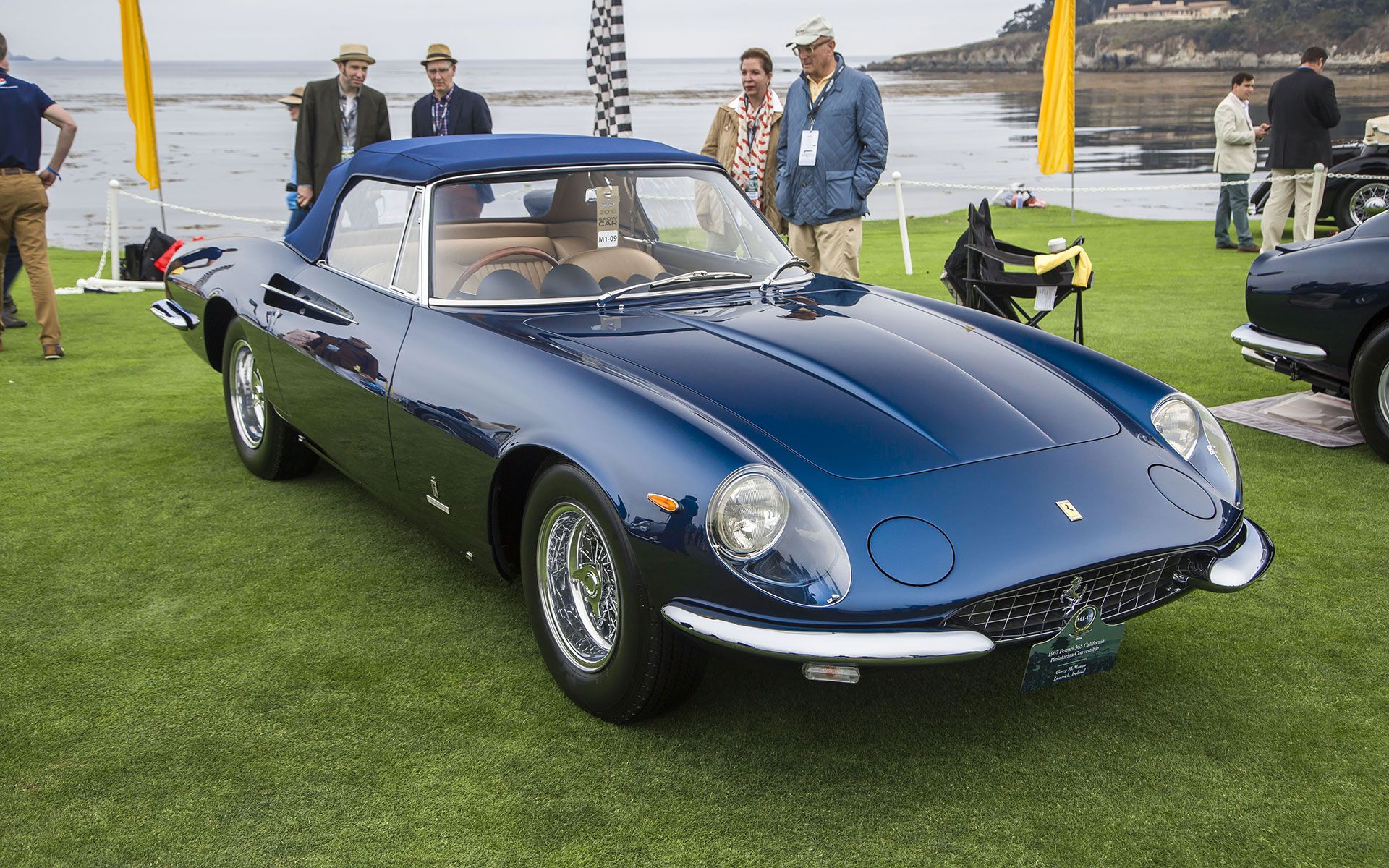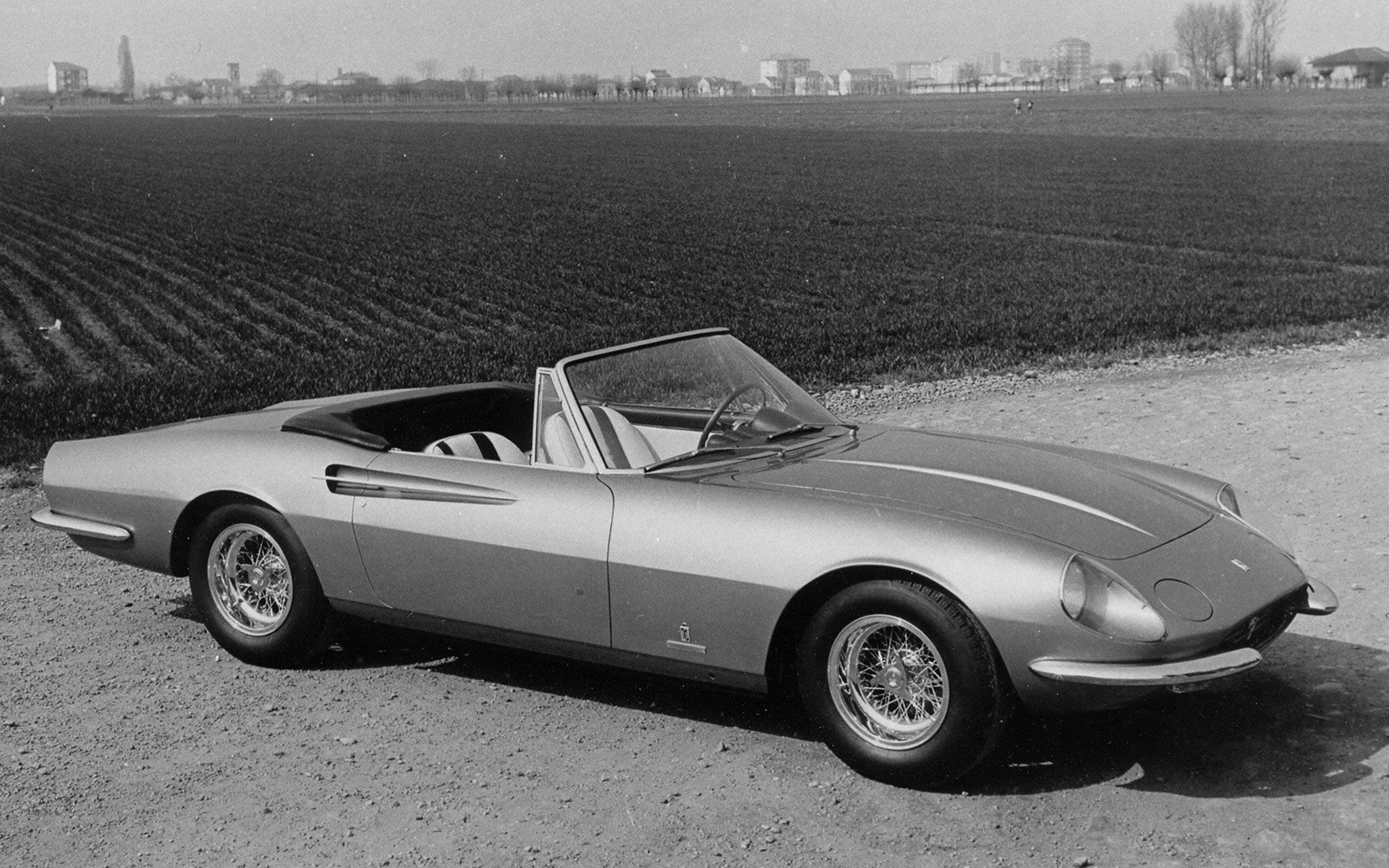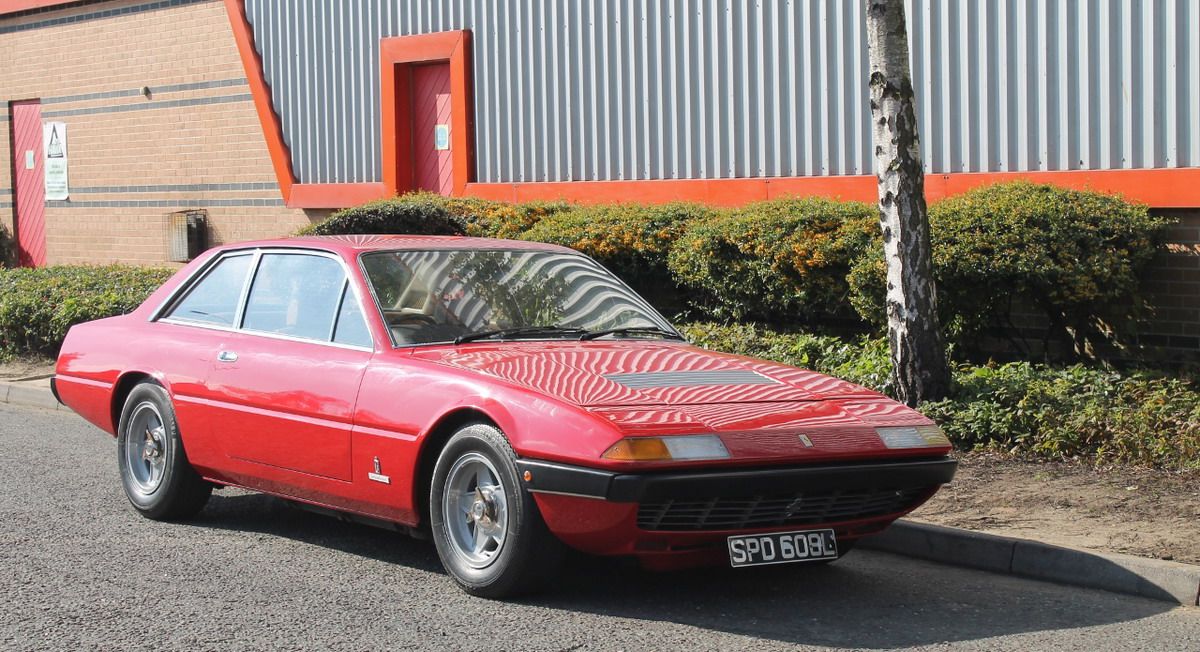Ferrari has been building supercars and sports cars for more than 70 years now and, needless to say, many of them are downright legendary. But not every vehicle with a Ferrari badge is iconic. Enzo's company had its fair share of flops, while some were built in very limited numbers and were simply forgotten over time. Others are nowhere to be found and some simply don't get the love they deserve. Here's a a list of 10 classic Ferraris that you probably forgot about
1949 Ferrari 166 Inter
Although it was established in 1939, Ferrari didn't make road cars until 1947. Enzo's first car was introduced as Auto Avio Costruzioni 815 due to legal issues with former associates Alfa Romeo and it took Maranello seven more years to produced the first Ferrari-badged model, the 125 S, in 1947. Primarily a racing model the 125 S was followed by the 166 Inter in 1949. The 166 was a radically different concept. A touring berlinetta, or a grand tourer in modern terms, it was Ferrari's first authentic road car. Although still based on a race car, the 166 S, the Inter was designed with a bit more comfort in mind. As was typical at the time, every 166 Inter started life as a bare chassis before it was delivered to a coachbuilder selected by the customer. Most buyers picked Carrozzeria Touring, which had also created the model that debuted at the 1949 Paris Motor Show, but some cars were bodied by Carrozzeria Ghia, Stabilimenti Farina, Bertone, and Vignale. As a result, most 166 Inter models look unique. The chassis were fitted with a 2.0-liter V-12 engine designed by Gioacchino Colombo. The mill was shared with the 166 S race car and developed 90 horsepower. The 166 Inter reached a top speed of 93 mph. Only 38 cars were built in 1949 and 1950.
1949 Ferrari 166 Inter specifications
|
Engine: |
2.0-liter V-12 |
|---|---|
|
Power: |
90 horsepower |
|
Torque: |
unknown |
|
0-60 mph: |
unknown |
|
Top speed: |
93 mph |
|
Years: |
1949-1950 |
|
Units produced: |
38 |
Read our full review on the 1949 Ferrari 166 Inter
1950 Ferrari 166 MM/212
The MM/212 was also part of the 166 family that included both road and race cars. But this one-off version is by far the most intriguing. Nicknamed "l'uovo," which is Italian for "the egg," the 166 MM/212 sports a rather strange design. Designed by sculptor Franco Reggiani, the MM/212 was penned with aerodynamics in mind, so it's a heavily streamlined version of the standard 166. Inspired by jet fighters from the era, the 166 MM/212 almost looks like one, sans the wings. The front end is almost tubular, with the fenders flanking a streamlined hood that flows into a perfectly round grille. The windshield is arched around the body, a design feature that seems unusual even today, when many supercars feature cockpit-style cabins. The windshield itself is arched toward the sides too, a design that automakers did not began to use on a large scale until decades later. The rear fenders are notably more muscular than the center of the body and flow into the rear to form a bubble-butt
fascia. This design was specifically commissioned by the Marzotto brothers, four racing drivers that not only bought several Ferraris, but also earned Ferrari great fame through their success on the race track.
This car actually started life as a regular 166 MM, but the Marzotto brothers decided to have it redesigned after crashing it at Mille Miglia. The lighter, more aerodynamic MM/212 debuted at Giro di Sicilia in unpainted aluminum and them it was raced at Mille Miglia. It failed to finished both races, but it won its third even, the Giro della Toscana. The car was then hauled to Mexico, from were it was purchased by a published from California. The car saw some track action in the U.S. in 1954, but it was sold again. A new owner began restoring the car in 1964 and kept it until 1982, when it was purchased by Ferrari dealer Ed Niles. Sold to Jack du Gan in the 1980s, the 166 MM/212 remained with the same owner for 30 years, before being auctioned off for $4.5 million in 2017.
1950 Ferrari 166 MM/212 specifications
|
Engine: |
2.6-liter V-12 |
|---|---|
|
Power: |
186 horsepower |
|
Torque: |
unknown |
|
0-60 mph: |
unknown |
|
Top speed: |
unknown |
|
Years: |
1950 |
|
Units produced: |
1 |
1953 Ferrari 625 TF Berlinetta
The 625 TF is part of a larger series called the Monza that included numerous cars built from 1953 to 1957. Most vehicles were roadsters designed for the World Sportscar Championship, but three of them were eventually finished for road duty. Bodies by Vignale, two were convertible Spider models, while one was finished as a Berlinetta coupe. The Berlinetta shared much of its body with the 625 TF race car, but Vignale skipped some race-spec features. The coupe was fitted with a bubble-style roof and proper doors, but the front fascia retained the massive grille and the open-wheel design under the headlamps. It's not the prettiest Ferrari out there, but it's a unique (and obviously rare) model. The history of this coupe is mostly unknown, but just like the race cars, it featured a 2.5-liter, four-cylinder engine rated at around 200 horsepower.
1953 Ferrari 625 TF Berlinetta specifications
|
Engine: |
2.5-liter four-cylinder |
|---|---|
|
Power: |
200 horsepower |
|
Torque: |
unknown |
|
0-60 mph: |
unknown |
|
Top speed: |
unknown |
|
Years: |
1953 |
|
Units produced: |
1 |
1953 Ferrari 250 Europa
Arguably the most iconic series of cars ever produced by Ferrari, the 250 includes legendary models like the Testa Rossa, GTO, GT, and GT Berlinetta Lusso. All these cars were built from 1952 to 1964, but there's one that doesn't get as much love as it deserves. It's called the 250 Europa and it was the first grand tourer model of the 250 series, basically conceived as a road-legal version of the 250 S race car. Designed by Pininfarina with a striking long nose, a curved windshield, and a short rear deck, the Europe influenced the styling of many legendary 250 series cars that followed, including the 250 GTO. But the 250 Europa also featured a unique V-12 engine. While all 250 modes were fitted with the Colombo V-12 engine, the Europa featured the Lampredi V-12 design. The 3.0-liter mill was based on Ferrari's 3.3-liter Formula One engine and generated 197 horsepower. Ferrari eventually dropped the Lampredi for the Europa GT model, which switched to the Colombo design in 1954. Only 22 Europa cars were built, 17 bodied by Pininfarina and five by Vignale. Only two featured cabriolet bodies.
1953 Ferrari 250 Europa specifications
|
Engine: |
3.0-liter V-12 |
|---|---|
|
Power: |
197 horsepower |
|
Torque: |
175 pound-feet |
|
0-60 mph: |
8.3 seconds |
|
Top speed: |
135 mph |
|
Years: |
1953 |
|
Units produced: |
22 |
Read our full review on the 1953 Ferrari 250 Europa
1956 Ferrari 250 GT Geneve Cabriolet Boano
The Europe isn't the only rare and somewhat obscure Ferrari from the 250 series. The Boano-made 250 GTs are also rare and somewhat unknown. Back in 1956, Pininfarina decided to experiment with the 250 and brought a modified car with curved rear fins, a sleeker roof, and an oval front grille. It also featured extra chrome, so it had a premium look and an overall design that seemed inspired by the American cars of the era. It was supposed to be just a show ar, but the car generated so much demand that Pininfarina decided to put into production. However, the shop was too small at the time to handle one more model, so the company asked Mario Boano, formerly of Ghia, to build it. Boano eventually built 74 cars, with all but one being coupes. The single convertible model was sold to American collector Bob Lee off the stand at the 1956 New York Auto Show. Lee still owns the car, making it one of the oldest Ferraris still with the original owner.
1956 Ferrari 250 GT Geneve Cabriolet Boano specifications
|
Engine: |
3.0-liter V-12 |
|---|---|
|
Power: |
220 horsepower |
|
Torque: |
195 pound-feet |
|
0-60 mph: |
8 seconds |
|
Top speed: |
140 mph |
|
Years: |
1956 |
|
Units produced: |
1 |
1961 Ferrari 250 Sperimentale
As the name suggests, the 250 Sperimentale was an experimental car, a test bed for the 250 GTO that Ferrari eventually introduced in 1962. Word has it Ferrari built five, but only one still appears in public. Also known as the GTO Prototype, it rides on a modified 250 Berlinetta chassis and shares most of its engine with the race-spec 250 Testa Rossa, which Ferrari built from 1957 to 1961. The Sperimentale also looks notably different than the 250 SWB, a rather conservative design. The prototype was designed with sleeker fenders and features more air outlets, a hint that Ferrari was looking to improve aerodynamics. The Sperimentale also features a raked rear section, with the line that descends from the roof with the rear window extending towards a thinner rear fascia. The sleek, flowing body was designed so that the car could hit higher speeds at Le Mans, but the Sperimentale failed to finish the race in 1961. However, after Ferrari was done with it and introduced the 250 GTO, this car was privately raced at Daytona and won its class in 1962.
1961 Ferrari 250 Sperimentale specifications
|
Engine: |
3.0-liter V-12 |
|---|---|
|
Power: |
300 horsepower |
|
Torque: |
246 pound-feet |
|
0-60 mph: |
unknown |
|
Top speed: |
150+ mph |
|
Years: |
1961 |
|
Units produced: |
5 |
1962 Ferrari 250 GT SWB Breadvan
The Breadvan was another experimental car based on the 250 series, but unlike the Sperimentale, it wasn't built by Ferrari. The car was commissioned by Giovanni Volpi, owner of the Scuderia Serenissima and sponsor of ATS, a company founded by former Ferrari employees Carlo Chiti and Giotto Bizzarrini. Enzo Ferrari refused to sell any 250 GTO to Volpi due to him hiring gformer Ferrari employees, so Giovanni asked Bizzarrini to develop a competitor using a 250 GT SWB race car as a donor. Bizzarinni applied all the ideas he learned while working on the GTO at Ferrari, but created a more aerodynamic body that extended all the way to the rear. Technically, the Breadvan is a shooting brake. Due to its appearance, Frech journalists nicknamed it "la camionnette," which translates to "little truck," but the race car became known as "the breadvan." Bizzarinni also moved the engine further back for better balance and the Breadvan eventually ended up being some 150 pounds lighter than the GTO. The car debuted in the 24 Hours of Le Mans in 1962 and it quickly outgunned Enzo GTOs, but it retired due to a driveshaft failure. The Breadvan proved its effectiveness by winning its class at Brands Hatch and Ollon-Villars, as well as talking third placed in the 1000 km de Paris. This unique Ferrari survived to this day and it can be seen at historic automobile events around the world.
1962 Ferrari 250 GT SWB Breadvan specifications
|
Engine: |
3.0-liter V-12 |
|---|---|
|
Power: |
286 horsepower |
|
Torque: |
unknown |
|
0-60 mph: |
unknown |
|
Top speed: |
160+ mph |
|
Years: |
1962 |
|
Units produced: |
1 |
1964 Ferrari 500 Superfast
The Ferrari 500 Superfast was part of the top-end America series that Maranello built from 1950 to 1967. Although the earlier models were mostly used in road racing, the America series eventually spawned full-fledged grand tourers that were both powerful and beautiful. The 500 Superfast arrived in 1964 as a replacement for 400 America and was replaced in 1966 by the 365 California. The 500 Superfast was mostly unknown until Ferrari revived the Superfast name with the 812. Although production of the 500 Superfast lasted for two years, only 36 units were built. All were powered by a 5.0-liter version of the iconic Colombo V-12 engine, rated at 395 horsepower. Unlike other models from the America series, the 500 Superfast wasn't offered in convertible form. But the coupe was quite elegant and seems a bit inspired by the 250 Sperimentale.
1964 Ferrari 500 Superfast specifications
|
Engine: |
5.0-liter V-12 |
|---|---|
|
Power: |
395 horsepower |
|
Torque: |
351 pound-feet |
|
0-60 mph: |
7 seconds |
|
Top speed: |
174 mph |
|
Years: |
1964-1966 |
|
Units produced: |
36 |
Read our full review on the 1964 Ferrari 500 Superfast
1966 Ferrari 365 California
The 365 California replaced the 500 Superfast in 1966 and was the final iteration of the America series. The 365 was in essence a more refined version of the 500 on the outside. It featured larger taillights, glass-covered headlamps like the Jaguar E-Type, thicker chrome bumpers, and slightly more organic lines overall. Unlike the 500 Superfast, the 365 California was restricted to a convertible layout, but it was one of the most beautiful of its time. The car wasn't very successful though. Due to its massive sticker, Ferrari sold only 14 before it ended production in 1967, so this car isn't very famous either.
1966 Ferrari 365 California specifications
|
Engine: |
4.4-liter V-12 |
|---|---|
|
Power: |
316 horsepower |
|
Torque: |
268 pound-feet |
|
0-60 mph: |
unknown |
|
Top speed: |
165 mph |
|
Years: |
1966-1967 |
|
Units produced: |
14 |
Read our full review on the 1966 Ferrari 365 California
1972 Ferrari 365 GT4 2+2 / 400 / 412
The last car on our list is actually an entire series that Ferrari produced from 1972 to 1989. Although these models were renamed as they were updated, they remained mostly the same by sharing the same body, chassis, and engines. A replacement for the old 365 series, the 365 GT4 was also a 2+2 grand tourer, but it featured a more angular design, like most grand GTs conceived in the early 1970s. The first series debuted with a 4.4-liter V-12 rated at 340 horsepower and remained in production until 1976. The 400 that replaced it was just a mild refresh design-wise, while the V-12 engine grew larger to 4.8 liters. But the biggest news was that it was also available with a three-speed automatic gearbox, making it the first Ferrari offered with such a transmission. The 400 became the 400i in 1979, when Ferrari replaced carburetors with fuel injection. Output dropped from 340 to 310 horsepower. The final version, called the 412, was produced from 1985 to 1989 with a 4.9-liter V-12 rated at 340 horsepower. Although it survived on the market for 17 years with 2,900 units built, this series is the only Ferrari built in the 1970s and 1980s that's not considered a classic yet. Although it's not as obscure as other Ferraris on this list, the 365 GT4 / 400 / 412 is one of those Ferraris that many didn't love because of its design. And it was also overshadowed by other Ferraris from the era, such as the 512, Testarossa, 308 GTB, and F40. But this series wasn't all that bad and it's your best shot at buying a classic V-12 with a Ferrari badge without breaking the bank.
1972 Ferrari 365 GT4 2+2 / 400 / 412 specifications
|
Engine: |
4.9-liter V-12 |
|---|---|
|
Power: |
340 horsepower |
|
Torque: |
333 pound-feet |
|
0-60 mph: |
6.7 seconds |
|
Top speed: |
155 mph |
|
Years: |
1972-1989 |
|
Units produced: |
2,907 |
Read our full review on the 1972 Ferrari 365 GT4 2+2
Q & A
How much are Ferrari cars?
That's a question with more than one answer. Modern Ferrari cars cost in excess of $250,000, depending on what model you choose. Vintage Ferraris, especially the iconic models and those with a rich racing background, usually fetch upward of $1 million, with some even going beyond the $20-million mark. However, the less popular models tend to cost less than the modern ones, with a few good nameplates available for less than $150,000. Again, depending on mileage, specs, and racing history.
Where are Ferrari cars made?
Ferrari's factory is located in Maranello, a small town in Northern Italy. Maranellos is some 11 miles from Modena, the city were Enzo Ferrari first started making race cars for Alfa Romeo.
When did Ferrari start making cars?
Ferrari started making race cars under the Scuderia Ferrari name in 1929, but these vehicles were raced at Alfa Romeos. Following Enzo's departure from Alfa Romeo, Enzo built his first race car under the Auto Avio Costruzioni name in 1940. Enzo wasn't allowed to build cars under his name until 1943 due to a legal dispute with Alfa Romeo. The first race car with a Ferrari badge, the 125 S, rolled out the assembly line in 1947. And that's pretty much the official year when Ferrari started making cars. The first Ferrari road car, the 166 Inter, was introduced in 1949.
How many cars does Ferrari sell per year?
Ferrari is now selling more than 10,000 cars per year. After years of having a production limit of just 7,000 cars per year, Ferrari expanded production to meet the high demand under recent chairmen Sergio Marchionne and John Elkann. In 2019, Ferrari sold 10,131 cars, surpassing the 10K mark for the first time in history.

